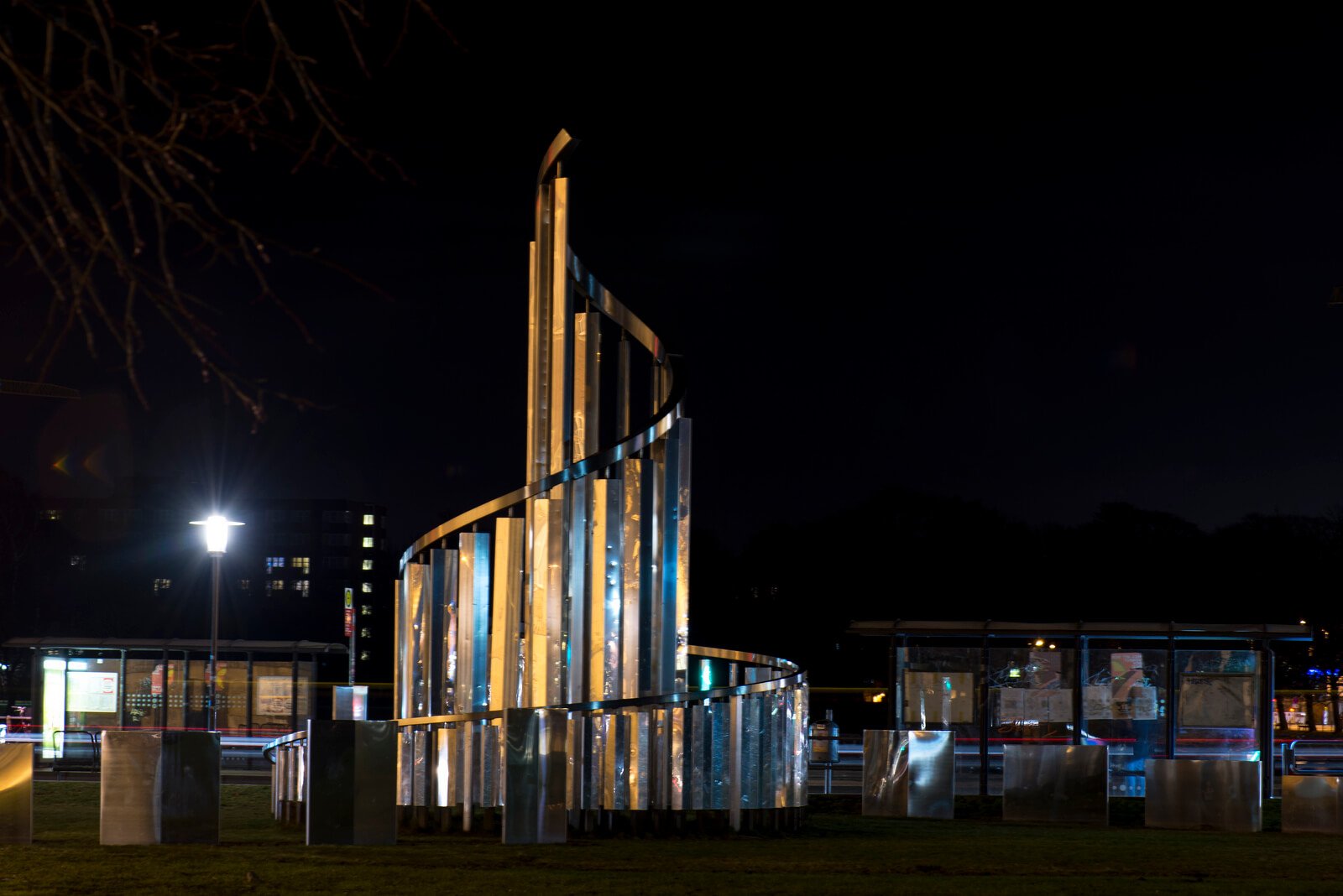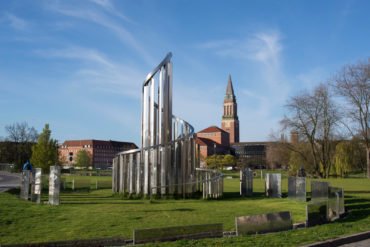Artist
Göpfert & Hölzinger
Hermann Göpfert was born on 5 November 1926 in Bad Nauheim. In 1947, he began training as an artist with evening classes with Theo Garvé at the Städelschule in Frankfurt, which he continued from 1951 to 1958 with studies as a master student of Albert Burkart, among others. In 1958, he co-founded the ‘Frankfurter Gruppe’, where he also moved into his first studio. In the 1960s and 1970s, he taught as a lecturer at the Kunsthochschule Kassel and the Städelschule in Frankfurt am Main. After an initial figurative phase, his personal contacts with Quadriga and ZERO artists, including for his ‘Red Pictures’ and ‘Black Pictures’, played a stylistically influential role in his reflective works made of polished metals. In 1965 Hermann Göpfert founded the ‘Planungsgemeinschaft für neue Formen der Umwelt’ together with the architect Johannes Peter Hölzinger. He produced numerous objects on his main themes of space, movement, light and reflections and was one of the representatives of kinetics and abstraction in the post-war period. His works can be seen in many collections, museums and public spaces. Hermann Göpfert died on 4 February 1982 in Antwerp.

On the occasion of the 1972 Olympic Games in Kiel, the former Stadtsparkasse (now Förde Sparkasse) commissioned the artists Hermann Göpfert and Johannes Peter Hölzinger to create a sculpture, which was erected on the small green area in front of the main branch. The object consists of a large number of differently sized elements made of shiny stainless steel, which reflect the incident light in all directions due to the different angles. This means that the light itself is also part of the artwork. The core of the work is the transfer of the mathematical form of a spiral into space. The individual elements are arranged in such a way that they emulate three spiralling lines, each of which also rises in height. The central spiral thus spirals up to a height of around 8 metres. Passers-by can walk from the outside to the inside and reach their destination in the centre of the spiral after two circuits from the start, where they are surrounded by high, glittering walls of stainless steel slats. As they walk around the figure, and even more so when they enter it, the spatial impression changes constantly, until at the centre of the spiral there is a loss of external perception.
